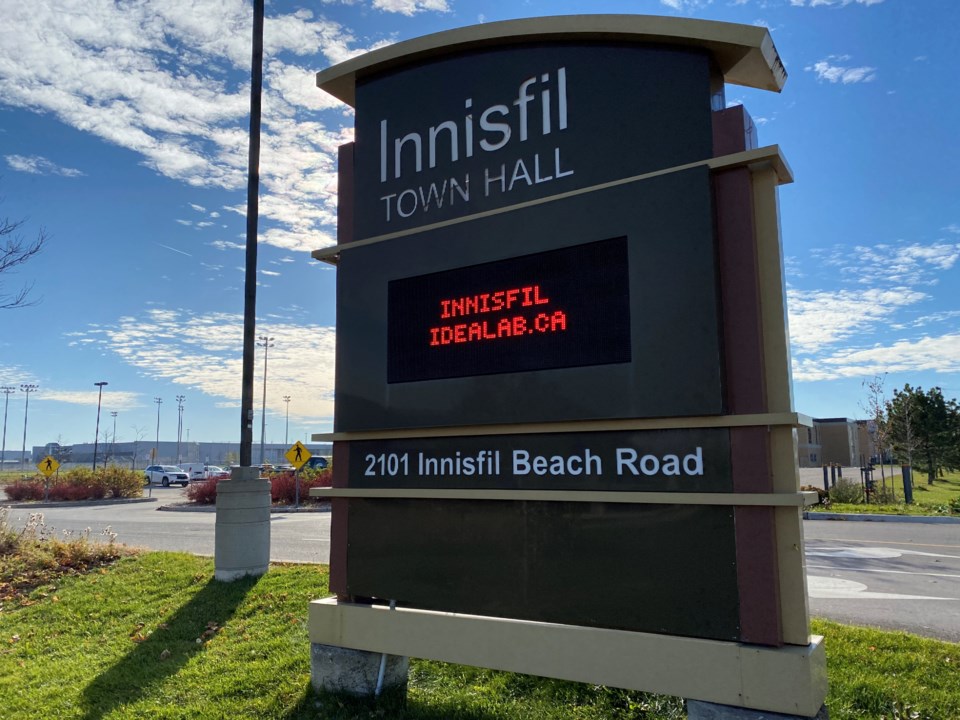For the first time in recent memory, the Town of Innisfil posted an operating deficit for 2022, but council doesn’t seem to be too concerned about it.
“I think that’s a good thing because it means that we budgeted leaner and we budgeted with much less wiggle room,” said Mayor Lynn Dollin.
Dollin, who has sat on council since 1994, said she did not recall the previous time the town posted a deficit. Typically, she added, Innisfil carries forward a “fairly large” surplus in its operating budget each year.
That’s not the case for 2022, however, as the town is short $148,000, an improvement on what was estimated in staff’s third-quarter financial report to council in late 2022, which suggested the deficit could be as high as $341,000.
The community standards and growing communities service bundles saw the greatest overages by percentage last year, with an extra $175,088 being spent on the community standards file and an extra $420,090 spent on the growing communities file.
Parks and recreation, fire services and roads all were over budget by more than $400,000 as well, but had much larger budgets to begin with.
Staff said there were several factors for the shortfall, but the lingering impacts of the COVID-19 pandemic were at the forefront of them.
“We built a budget that was pretty lean and so obviously there were some risks in doing that,” said treasure Audrey Webb. “Into the 2022 year, some of those revenues didn’t rebound as we anticipated. We’ve seen cost escalations related to post-COVID market and supply issues (and) inflation.”
Given those other factors – and areas such as community prosperity or stormwater management that came in under budget – the deficit wasn’t “too bad,” Webb said, equal to 0.48 per cent of the tax levy.
That precision wowed Dollin.
“It’s almost like getting a bull's eye when you consider the amount of the budget and getting that close to it,” she said.
The deficit will be covered by funds in the tax rate stabilization reserve.
The year-end staff report on the town’s finances presented at the May 24 meeting also looked at building permit revenue, capital costs and long-term debt requirements as to the end of 2022.
Building permits were above budget for 2022, with more than $3 million in activity recorded, over a budget of approximately $2.8 million. The town also spent $231,295 less than anticipated, adding a total of $349,163 to the inspection stabilization reserve.
At the end of 2022, the town had more than $123 million of approved capital projects in the works, to be completed over a three-year time frame, with nearly $30 million spent toward them, about 47 per cent of what had been planned.
About $94.4 million is being carried over to 2023 to continue that work, about $800,000 more than was carried over into 2022.
Delays in work on the 6th Line – including the railway bridge expansion and road work between 20th Sideroad and St. John’s Sideroad – and the new roundabout and traffic signal at 25th Sideroad and Big Bay Point Road were among the projects contributing to the capital spending variance in 2022.
“Many of the above projects experienced construction delays or deferrals which significantly impacts the amount of funds that are spent,” staff stated in the report. “Staffing resource challenges due to vacant positions at the town and with consultants, was a contributing factor in these delays.”
Overall, the town is in good financial shape, with approximately $88.4 million in capital commitments beyond 2022 with a cash balance of more than $116 million, about $10 million more than at the end of 2021.
From a debt perspective, just less than $14 million was on the books at the end of 2022, with nearly $10 million set to be taken on with the completion of the Big Bay Point fire hall and the south Innisfil drain.
That puts it well below the debt capacity allowed by the province, equating to 25 per cent of the value of the town’s capital assets, which would be approximately $158.3 million
Innisfil has its own policy with a 20 per cent limit, which would be about $116.3 million.



